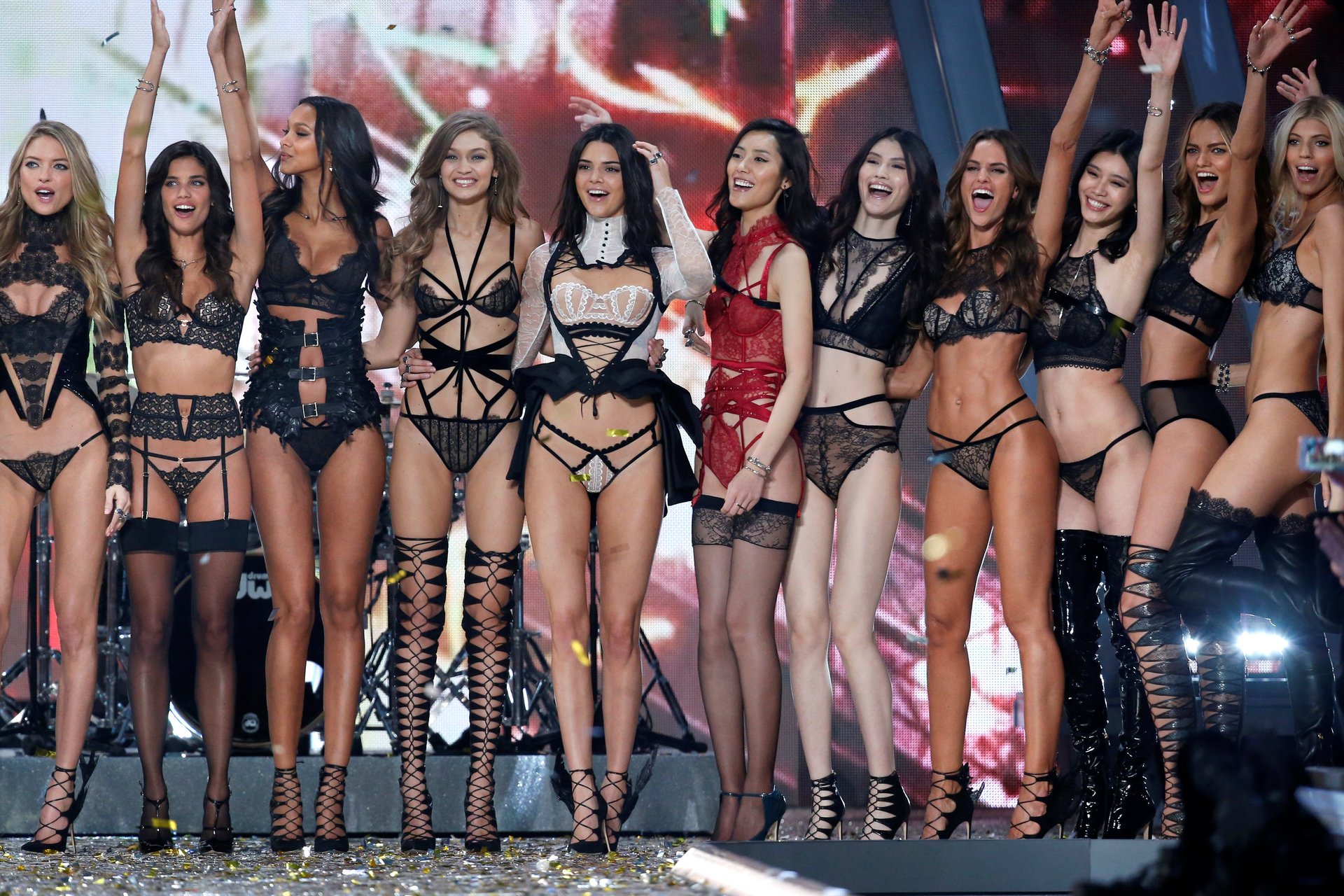Victoria’s Secret’s porny fashion show won’t help the failing brand’s image
Victoria’s Secret’s annual televised runway extravaganza has been the company’s splashiest PR event since it began in 1995. Some watch it for the performance from a Lady Gaga- or Rihanna-level pop star. Some enjoy the spectacle of supermodel “angels,” bedecked in giant wings, feathers, jewels and tiny—tiny—intimates, strutting down the runway. And of course, some watch it for the boobs.


Victoria’s Secret’s annual televised runway extravaganza has been the company’s splashiest PR event since it began in 1995. Some watch it for the performance from a Lady Gaga- or Rihanna-level pop star. Some enjoy the spectacle of supermodel “angels,” bedecked in giant wings, feathers, jewels and tiny—tiny—intimates, strutting down the runway. And of course, some watch it for the boobs.
This year will be no different: The models Kendall Jenner and Gigi and Bella Hadid are set to walk the runway in New York today, and the Victoria’s Secret Fashion Show Holiday Special will air on ABC in the US next month, and in 190 countries around the world. But analysts are warning that the fashion show will do little to change their dismal expectations for the brand.
It’s no secret that the lingerie behemoth has seen better days—the retailer used to have a near-monopoly on the bra-market (PDF), but its failure to adjust its brand image, coupled with increased competition, has seen it struggle to stay relevant.
While the fashion show itself suffered its worst ratings on record last year, the problems with Victoria’s Secret run much deeper than its annual ogle-fest.
Victoria’s Secret slips
“VS’ fashion show illustrates how out of touch the brand still is,” Randal Konik said in a note to clients this week. “With TV ratings that have been in free fall for years and a consumer that no longer resonates with ‘supermodels’ we question why the company continues to hold the show. We expect ratings to continue their decline this year and the VS brand to lose mindshare.”
The brand, alongside its college- and teen-oriented label Pink, has been selling cheaper and cheaper intimates, to little avail. Konik, a longtime bear on the brand, has been tracking the cost of VS products in a so-called “panty price tracker” for over a decade, and notes that its latest promotion—a “buy 2 get 1 free” deal on its top line bras, and $3 Pink panties for members—marks a record low price point for its undies.
Victoria’s Secret has been in free-fall for some time now. It slashed its apparel and swimwear businesses in 2016, and followed that with an announcement in August that it would shutter 20 stores due to poor sales. The brand’s decline contributed to a swan dive for its parent company, L Brands, that began in 2015 and resulted in a 72% share drop over three years. It’s down 43% this year alone. L Brands said in September it would shutter its luxury retailer Henri Bendel in 2019 (including 23 of its physical stores) to “increase shareholder value.”
Sex isn’t really selling
There’s an argument to be made for the artistic value of the VS show: The wings, bejeweled bras, and talented models have made this an iconic and anticipated event for many years now. Just last year, it made its debut on the global stage with its first Shanghai show.
But the hyper-sexualized, male-gaze-oriented aesthetic of the fashion show offers a glaring example of one of the brand’s most fundamental problems: In the last decade, marketing trends for women have focused on empowerment and body positivity (paywall). But as much of women’s beauty and apparel began to embrace that approach, Victoria’s Secret doubled down on its sex kitten marketing campaigns and continued to run the same sexy ads it did two decades ago.
Data from the brand insights firm YouGov suggest that women’s perception of the company has declined since 2013. And in the #MeToo era, when overtly “sexy” clothing is becoming a bit of a record-scratch on runways across the world, this perception is unlikely to improve.
What’s more, VS is now facing serious competition in the bra market. Aerie, the American Eagle intimates sub-brand, has been eating up VS market share for awhile now. Its body-positive campaigns have caused the brand to thrive exactly where Victoria’s Secret has failed.
Meanwhile, at its New York Fashion Week debut, Rihanna’s Fenty X Savage lingerie presented itself in high contrast to a classic VS fashion show, which is a historically whitewashed event featuring only slender supermodels. The Fenty show featured a diverse cast of women with a range of different body types.
Likewise, the wave of direct-to-consumer bra retailers such as True&Co, Lively, and ThirdLove—the last of which was just named one of Forbes’ billion-dollar startups for 2018—have used an inclusive, body-positive marketing approach. And while it doesn’t do a lot of marketing of its underwear, Amazon too is selling cheap intimates as it aims to become the US’s largest clothing retailer.
These brands are priced similarly to a VS bra, but they’re succeeding by doing things that VS hasn’t bothered with since it was founded in the 70s: Listening and responding to customer feedback, prioritizing comfort over sexiness, and introducing extended size ranges.
None of that fits Victoria’s Secret’s brand image. Aspiration to a narrowly defined idea of beauty and sex appeal has been Victoria’s Secret’s big pitch ever since it started recruiting supermodels like Heidi Klum, Tyra Banks, and Gisele Bundchen for its shows and catalogs in the 1990s, back when landing a Victoria’s Secret gig was an indicator of mainstream supermodel status.
In truth, Victoria’s Secret problem isn’t its tone-deaf runway show. Changing its marketing approach probably wouldn’t be enough to restore it to its former glory. It would have to change its DNA, start listening to women, and recognize that most of them don’t look like a Victoria’s Secret Angel—and don’t particularly aspire to.